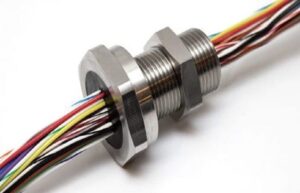Money Back Policy vs Endowment Plan: What’s the Difference?

When it comes to choosing a life insurance policy that offers both protection and savings, two options often come up for comparison, the money back policy and the endowment plan. At first glance, they may seem quite similar. Both offer life cover, both return your investment over time, and both come with maturity benefits. But there are important differences in how they work, how they pay out, and which financial goals they best support.
In this blog, we break down the money back policy vs endowment plan comparison in simple terms, so you can choose the one that’s right for your needs.
What Is a Money Back Policy?
A money back policy is a life insurance plan that provides periodic payouts (survival benefits) during the policy term. These payouts are a percentage of the sum assured and are paid out at fixed intervals. If the policyholder survives the full term, the balance amount along with bonuses is paid at maturity. In case of death during the policy term, the entire sum assured is paid to the nominee, regardless of previous payouts.
Key Features:
- Offers liquidity during the policy term
- Payouts are predefined and guaranteed
- Full sum assured paid on death
- Eligible for bonuses (in participating plans)
- Tax benefits under Section 80C and 10(10D)
Example:
If you buy a ₹10 lakh policy for 20 years, you may receive ₹2 lakh every 5 years (total ₹6 lakh by year 15), and ₹4 lakh + bonuses at maturity. If death occurs in year 17, the nominee still receives the full ₹10 lakh.
What Is an Endowment Plan?
An endowment plan is a traditional life insurance policy that offers a lump sum payout at maturity if the policyholder survives the term. If the policyholder passes away during the policy period, the sum assured (plus bonuses, if applicable) is paid to the nominee. Unlike a money back policy, there are no periodic payouts during the term.
Key Features:
- Provides a lump sum at the end of the policy term
- Includes life insurance cover during the term
- Participating plans may offer bonuses
- No survival payouts during the policy duration
- Tax benefits under Section 80C and 10(10D)
Example:
If you buy a ₹10 lakh endowment plan for 20 years and survive the policy term, you receive ₹10 lakh + bonuses at maturity. If you pass away in year 15, your nominee receives the full death benefit.
Money Back Policy vs Endowment Plan: A Detailed Comparison
| Feature | Money Back Policy | Endowment Plan |
| Survival Benefits | Paid at fixed intervals | Not applicable |
| Maturity Benefit | Remaining sum assured + bonuses | Full sum assured + bonuses |
| Death Benefit | Full sum assured (irrespective of payouts) | Full sum assured + bonuses |
| Liquidity | High (due to interim payouts) | Low (only at maturity or on claim) |
| Returns | Lower (due to periodic withdrawals) | Slightly higher due to compounding |
| Policyholder Suitability | Those needing regular payouts | Those who can wait till maturity |
| Premiums | Slightly higher than endowment plans | Comparatively lower for the same coverage |
| Risk Profile | Low | Low |
| Bonus Eligibility | Yes (for participating policies) | Yes (for participating policies) |
When Should You Choose a Money Back Policy?
A money back policy is suitable if:
- You have recurring financial goals, like school fees, EMIs, or family travel, during the policy period
- You want periodic liquidity along with life cover
- You’re looking for a low-risk product with guaranteed payouts
- You prefer structured saving with intermediate benefits
When Should You Choose an Endowment Plan?
An endowment plan is better if:
- You can afford to lock in your money until maturity
- You want a lump sum at a specific future milestone, such as buying a home, funding higher education, or retiring
- You don’t need regular payouts during the policy term
- You prefer disciplined, goal-based savings
Are Both Plans Good Investment Options?
Both plans are more about safety and discipline than high returns. They are ideal for investors who:
- Are risk-averse
- Value capital protection
- Want life cover + savings
If you’re looking for high returns or inflation-beating performance, market-linked products like ULIPs or mutual funds may offer better long-term growth, though they come with higher risk.
Can You Combine Both?
Yes. Many individuals combine these plans to serve different financial goals.
Example Strategy:
- Use a money back policy to plan for your child’s school fees or anniversary trips
- Use an endowment plan to build a lump sum for your child’s college education or your own retirement
This ensures both liquidity and wealth accumulation over the years, while keeping your family protected.
Final Thoughts
The choice between a money back policy and an endowment plan comes down to one simple question: Do you need money during the policy term or only at the end?
If you want intermittent payouts, go for a money back policy. If you prefer to wait and receive a single, larger payout, the endowment plan may suit you better.
Whichever you choose, remember to align your insurance plan with your financial goals, cash flow needs, and risk comfort. After all, the right plan is not just about returns, it’s about peace of mind and financial clarity.







